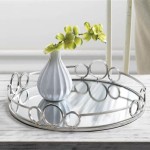Mirror Window Tint Car
Mirror window tint, applied to car windows, delivers a highly reflective appearance often compared to a mirror. This distinctive aesthetic stems from the tint's construction, incorporating metallic layers that reflect a significant portion of incoming light. While offering a unique look, mirror tint also carries practical benefits and potential drawbacks that necessitate careful consideration before installation.
The reflective properties of mirror tint contribute significantly to reducing solar heat gain inside the vehicle. By reflecting sunlight, the tint minimizes the amount of heat that penetrates the glass, keeping the car's interior cooler. This can be particularly beneficial in hot climates, reducing reliance on air conditioning and potentially improving fuel efficiency. The reflective nature of the tint also reduces glare, enhancing visibility and driving comfort, especially in bright sunlight.
Beyond temperature regulation and glare reduction, mirror tint offers increased privacy. The mirrored exterior makes it difficult for outsiders to see into the vehicle, enhancing the occupants' seclusion. This added privacy can deter potential theft by obscuring valuables left inside the car. Furthermore, the metallic layer in mirror tint can provide an added layer of protection by strengthening the glass, making it more resistant to shattering in the event of an accident or attempted break-in.
Mirror tint is constructed through a process that involves depositing multiple layers of metal onto a polyester film. Common metals used include aluminum, nickel, and chromium. The specific metal used influences the tint's color and reflectivity. The manufacturing process ensures a durable and long-lasting film that can withstand exposure to the elements. The tint is then applied to the car's windows using specialized tools and techniques, ensuring a smooth and bubble-free finish.
Installation requires precision and expertise to achieve optimal results. Professionals typically employ a wet application method, using a soapy solution to position and adhere the tint to the window. The film is then carefully trimmed and smoothed to fit the window's contours, ensuring complete coverage and eliminating any wrinkles or air bubbles. Proper installation is critical for maximizing the tint's performance and longevity.
The legality of mirror window tint varies significantly depending on the jurisdiction. Many regions have specific regulations regarding the permissible level of light transmission, often referred to as Visible Light Transmission (VLT). These regulations are in place to ensure driver visibility and safety. Mirror tints, due to their high reflectivity, often struggle to comply with these VLT requirements. Therefore, it's crucial to research and understand local laws and regulations before installing mirror tint to avoid potential fines or legal issues.
While offering numerous advantages, mirror tint also presents some potential disadvantages. The high reflectivity, beneficial for privacy and heat reduction, can also create visibility challenges, particularly at night or in low-light conditions. The mirrored surface can reflect headlights and other light sources, potentially hindering the driver's vision. Additionally, the metallic layer in some mirror tints can interfere with electronic signals, such as GPS, radio, and cell phone reception.
Several alternatives to mirror tint offer similar benefits without the same drawbacks. Dyed window tints, made with non-reflective dyes, provide privacy and heat reduction without the mirrored appearance. Ceramic tints utilize a ceramic nanoparticle technology to offer superior heat rejection and UV protection while maintaining excellent visibility. Carbon tints, crafted from carbon particles, provide a non-reflective dark appearance and good heat rejection. Crystalline tints employ a multi-layered optical film technology to reject heat and UV rays without significantly darkening the windows.
Selecting the appropriate car window tint involves careful consideration of various factors, including local regulations, desired level of privacy, heat rejection needs, and potential impact on visibility. Researching different tint types, understanding their respective properties, and consulting with professional installers can assist in making an informed decision.
Maintaining mirror window tint requires specific care to ensure its longevity. Cleaning the tinted windows should be done with a soft, non-abrasive cloth and a mild cleaning solution, avoiding harsh chemicals or abrasive cleaners that can damage the film. It's also important to avoid using sharp objects near the tinted windows, as they can scratch or tear the film. Regular cleaning and careful handling will help preserve the tint's appearance and performance over time.
The cost of mirror window tint varies based on several factors, including the type of metal used, the quality of the film, the size of the vehicle's windows, and the installer's labor rates. Obtaining quotes from multiple reputable installers can help determine a reasonable price range for the desired tint. It's important to prioritize quality and professional installation over price alone, as a poorly installed or low-quality tint can lead to problems later on.

One Way Mirror Reflective Car Uv Window Color Tint Purple 40 In X 100 Ft
Universal 20 X10ft Uncut Roll Window Mirror Silver Chrome Tint Car Glass

5 Tips For Taking Better Care Of Your Cars The Longer You Have Them Anne Cohen Writes Tinted Windows Window Tint Grey Car

Install Mirror Window Tint For Your Car

2 Ply Sun Control Car Reflective Metallic Window Tint China Made In Com

What Is The Best Window Tint Car Specialist Customs

One Way Mirror Window Heat Uv Reflective Privacy Tint Foil For Home Office Com

One Way Mirror Window Heat Uv Reflective Privacy Tint Foil For Home Office Com

Vvivid Red Transpa Window Tint The

Two Way Mirror Tinted Window Car Intimity 6 Steps With Pictures Instructables








